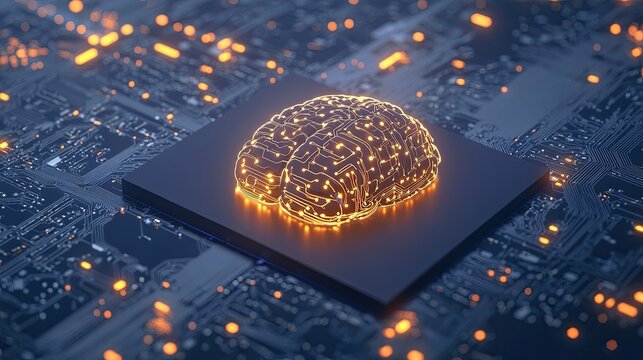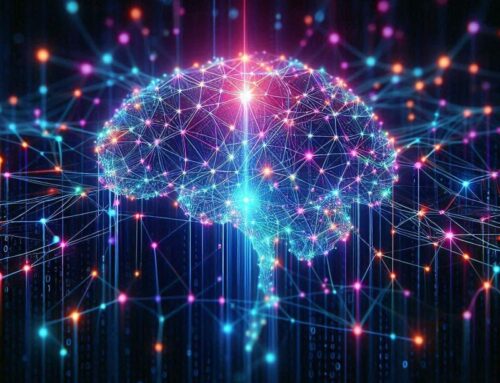Author: Amina Abubakar
In today’s digital era, cybersecurity threats are evolving at a rapid pace, becoming more complex and frequent. Traditional cyber security approaches, while still essential, often struggle to keep up with the sophisticated tactics employed by cybercriminals. Enter Artificial Intelligence (AI): a transformative technology that is redefining how organizations protect their data and infrastructure.
Key Attributes of AI
AI systems, especially those utilizing machine learning, possess the remarkable ability to continuously learn from new data. This capability allows them to adapt to evolving threat landscapes and enhance their detection capabilities over time, all without requiring extensive reprogramming.
Natural Language Processing (NLP) empowers AI to analyze and interpret human language, making it invaluable for threat intelligence. For instance, AI can sift through vast amounts of unstructured data from sources like social media and dark web forums, pinpointing emerging threats and relevant discussions related to cybercrime.
In addition, AI can analyze data and make decisions in real-time, enabling organizations to respond to threats as they arise. This immediacy is crucial for preventing data breaches and minimizing damage during active attacks.
Moreover, AI solutions are inherently scalable, adjusting seamlessly to an organization’s growing needs. As data volumes increase, AI can efficiently process and analyze this information without a corresponding rise in human resources, making it a cost-effective solution for businesses of all sizes.
The integration of AI in cybersecurity has the potential to revolutionize threat detection, prevention and response. Here’s a closer look at the various ways AI enhances cybersecurity and why it is becoming a key player in the field.
Enhanced Threat Detection
Traditional cybersecurity tools typically rely on predefined rules and patterns, which can only identify known threats. AI, particularly through machine learning (ML), enables real-time analysis and detection of anomalies. By examining vast amounts of data across an organization’s network, AI can learn what constitutes “normal” activity and quickly flag any unusual patterns, even if they are previously unseen.
For example, AI-driven threat detection can identify behaviors such as unusual login attempts, atypical data access patterns, or unexpected downloads that may indicate a security breach. This proactive approach allows organizations to catch threats before they escalate into significant attacks.
Predictive Analysis
AI-powered predictive analysis enables cybersecurity teams to anticipate attacks before they occur. By examining historical data from previous incidents and continuously monitoring emerging trends, AI can identify potential threats and recommend preventative measures.
This capability, known as predictive cybersecurity, empowers organizations to proactively strengthen their defenses, significantly reducing the likelihood of successful attacks. AI systems can analyze threat intelligence, such as newly discovered malware signatures and vulnerabilities, and suggest countermeasures before these threats become widely exploited.
Moreover, AI can forecast potential vulnerabilities by evaluating system configurations and user behavior patterns. This proactive approach allows organizations to fortify their defenses in advance, effectively mitigating risks before an attack takes place.
Automation of Routine Tasks
AI can automate repetitive and time-consuming tasks, allowing cybersecurity teams to focus on more critical issues. Tasks such as log analysis, vulnerability scanning, and patch management are essential but can be labor-intensive. AI algorithms can handle these tasks efficiently, ensuring they’re completed without human error and at a fraction of the time.
For example, AI can help automate the process of applying patches to software vulnerabilities or conducting vulnerability scans across a network. This increased efficiency can significantly reduce the “window of exposure” for vulnerabilities, enhancing overall security.
Advanced Malware Detection
AI can detect complex malware, including zero-day threats, by examining file attributes, behavior, and contextual clues instead of relying solely on signatures. Unlike traditional antivirus programs that require a known malware signature to detect threats, AI can identify malware by analyzing the intent and actions of a program. This enables it to spot malware that hasn’t been previously cataloged, increasing the effectiveness of defenses against emerging threats.
Machine learning algorithms can study patterns associated with ransomware or trojans and recognize similar behaviors in unknown files, alerting security teams to potentially malicious activity early on.
Improved Incident Response
AI enhances incident response by speeding up the time it takes to detect, analyze, and respond to threats. With AI-powered tools, security teams can quickly assess the scope and impact of a breach, identify compromised systems, and recommend mitigation steps.
Automated incident response systems can help contain threats within seconds, minimizing damage. AI-driven tools can also help security teams prioritize alerts, filtering out false positives so that they can focus on real threats, reducing alert fatigue and enhancing productivity.
Behavioral Analysis and Insider Threat Detection
AI excels at identifying anomalies in user behavior, making it particularly useful for detecting insider threats. Insider threats—whether intentional or accidental—are some of the most challenging cybersecurity issues to address because they often involve authorized users.
By analyzing behavioral patterns, AI can flag when a user deviates from their usual behavior. For example, an employee who accesses sensitive files at odd hours or downloads unusual amounts of data could trigger an alert, enabling cybersecurity teams to investigate further.
Adaptive Defense Mechanisms
AI can adapt its defense strategies based on evolving threats. Traditional security solutions require frequent manual updates to stay relevant against new threats. However, AI models can evolve autonomously, continually learning from new data to stay current with emerging threat patterns.
This adaptability allows AI-driven systems to keep pace with the latest attack vectors, making them more resilient against threats that target outdated software or defenses.
Threat Intelligence Integration
AI can aggregate and analyze data from various sources, such as threat intelligence feeds, social media, and dark web monitoring, to create a comprehensive view of the threat landscape. By synthesizing this data, AI can identify emerging trends and tactics in cybercrime, providing security teams with actionable insights to inform their defense strategies.
For instance, if threat intelligence data reveals that a certain type of ransomware is spreading rapidly, AI can identify potential weaknesses in the network and suggest specific actions to counter the threat.
Challenges and Considerations
While AI offers numerous benefits in cybersecurity, it’s not without challenges. AI algorithms are only as effective as the data they’re trained on, meaning biased or incomplete data can lead to inaccurate threat detection. Cybercriminals can also exploit AI’s weaknesses, such as by using adversarial attacks to confuse algorithms.
Additionally, integrating AI with existing cybersecurity infrastructure can be complex and costly, and organizations must ensure they have skilled professionals to manage and interpret AI outputs effectively.
Conclusion
The integration of AI into cybersecurity represents a transformative development, equipping organizations with powerful tools to stay ahead of ever-evolving threats. By automating routine tasks, analyzing vast data sets, and adapting to new attack methods, AI-driven cybersecurity solutions empower teams to respond to threats more swiftly and effectively than ever before.
As AI technology continues to advance, its role in cybersecurity will likely evolve from supportive to integral in our digital defenses. In a landscape where cyber threats are increasingly sophisticated, AI’s capabilities provide hope for a safer and more resilient digital future.





